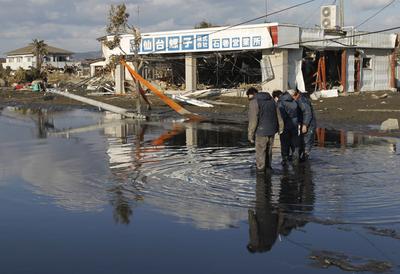But since the nuclear catastrophe, analysts are uncertain about the future of the industry in Asia. Much of the recent attention, rightfully, has been focused on Japan, a country that consumes half of Asia’s nuclear power, and on China, home to 13 operational reactors, with an additional 27 under construction and nearly 60 more projects planned.
As of April 2010, there were 112 nuclear power reactors operating in Asia, 37 under construction, and firm plans to build another 84. Besides China, which accounts for two-thirds of all reactors under construction, South Korea, India, Japan, Taiwan and Pakistan are also building new reactors. Power reactors are at their planning stage in Bangladesh, Indonesia, North Korea, Thailand and Vietnam.
What will be the impact of the recent nuclear disaster in Japan on Asia’s nuclear future?
First, it is important to consider past trends. Consumption trends over the past decade reveal that Japan’s consumption of nuclear power dropped by over 13 per cent, while there has been significant growth in consumption in China (five-fold). South Korean consumption grew rapidly in the first half of the past decade, but has been stagnant since. Consumption in India and Taiwan has remained steady throughout the decade. China accounted for almost 50 per cent of the growth in regional nuclear power consumption.
Given the recent trends, and the extent of the recent disaster, it is likely that the consumption of nuclear power in Japan will drop significantly over the next decade. Existing reactors, particularly those close to fault lines, will be offline for extended periods and some will be decommissioned. These reactors will be put under close scrutiny and safety procedures will be upgraded to ensure that similar disasters are prevented. It is expected that Japan’s plans to build new reactors will be downsized, but the public must first be convinced that reactors are able to withstand earthquakes and tsunamis. To make up for lost nuclear power (which provides 29 per cent of Japan’s electricity) in the short term, Japan is likely to import more coal and gas from Australia and Indonesia. In the longer term, Japan will significantly increase investment in alternative and renewable energy.
In the aftermath of the Japanese disaster, it is unlikely that Asia’s emerging economies, such as Indonesia, Thailand, Vietnam or Bangladesh, which had planned to build nuclear reactors, will go down that path. At best, their projects will be delayed by a decade. These countries have weak regulatory structures and/or inadequate disaster management systems to prevent and contain the extent of a potential nuclear disaster. The international community will also discourage these and other emerging economies in Asia from pursuing nuclear power. In Australia, a country that has had a recent public debate on the future of nuclear power, public opinion will sway further against the cause.
The prediction for the rest of the region is less bearish, especially in China. In the aftermath of the Fukushima disaster, the Chinese government decided to suspend all future nuclear power projects if they had not already been approved. But given China’s thirst for energy to fuel economic growth, which is the basis for continued regime legitimacy, Beijing is more than likely to continue moving ahead rapidly to build new nuclear power plants. Particular emphasis will be given to Generation IV high-temperature gas-cooled reactors with pebble bed fuel, which have improved operating safety.
Given the extent of recent investment in the future of nuclear power, both South Korea and India are likely to continue building new reactors, albeit at a slower pace. Emphasis will be given to upgrading safety features of the already operational reactors, and improving safety features of South Korea’s new APR1400 reactor and India’s PHWR and other reactors.
In short, recent events in Japan will delay, rather than derail, Asia’s nuclear ambitions, with the exception of Japan and a number of other developing economies in the region. In the short to medium term the exporters of fossil fuels — that is, the competitors to nuclear power, coal and gas — will profit from the disaster in Japan.
Dr Vlado Vivoda is a Research Fellow at Griffith Asia Institute, Griffith University, specialising in Asia Pacific energy security.

